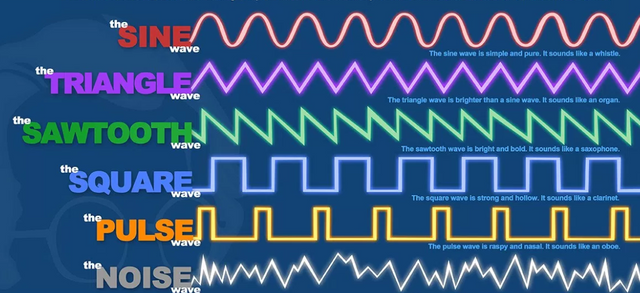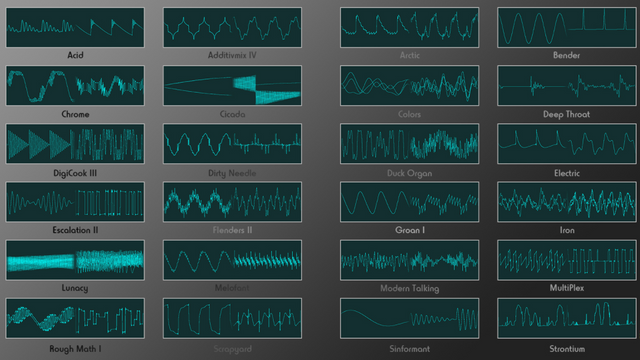Synthesis of sound and all about it
Working with synthesis, the fundamentals and methods of synthesis of sound.

Success in creativity usually arises when listening to new sounds. If you do not have the opportunity to purchase new sound modules, do not be discouraged. There are ways in which you can solve these problems. The main advice is to maximize your old synths for synthesis.
For maximum sound programming, you can just unscrew the knobs at random, or you can think through and analyze the entire process in detail. The most interesting is that both methods will give a good result, although they will be very different.

Methods and fundamentals of synthesis of sound on the synthesizer:
In club music, the pace is the main one. For the musical tempo, the sound will be properly cleared by doing an LFO synchronization and, you need to consider other modules. This function on different synthesizers is called differently: "Clock MIDI", "External" or "Tempo Sync". For orchestral or classical compositions, the tempo is associated with vibrato, a small variation in speed is allowed, this adds to the tracks expressiveness.
If you want to achieve a better synthesis of sound, then you can turn off effects and use external processors. To get an interesting and piercing sound, you need distortion, that is, a slight distortion.
The situation in which every musician has been, is the lag of the track from the overall composition. This created difficulties with quantization (alignment of tracks). To solve this problem, check the length of the sound activity in relation to the arrangement. This is the main basis, if you have changed the tempo in the composition. Remember, it is in the attack is the basic information that it bears listeners.

For a more extensive synthesis of the introduction, listen to the demo arrangements. Do not miss the sounds and presets of third-party authors. Many Cj professionals use sound sets of commercial origin, this in turn develops well.
I want to note the effect of parameters on synthesis in sound. Many are very important, although fairly simple. These are parameters such as: - Attack, attenuation, filter slice, and also LFO, so you can make many interesting sounds.
Learn all the effects settings and key reactions, as well as a fully synthesizer. Consider all filtration modes and wave tables (if present). Expand and study the current methods. Pay attention to the filter sections and modulation. The best result of the new sound can be achieved through filters. You can start with the parameters of the envelope, as well as the velocity (velocity of pressing the keys). And do not forget about wave forms.
For a bold and high-quality bass, without touching the filter, mix a triangular or sinusoidal wave with an interesting and vivid sound. Experiment with several parallel voices. For the contrast of the track, simplify the sound.
In the case of not showing all the details of your composition, work with the settings transmit / receive MIDI.
Change the instruments with roles, try to squeeze out the pad or other instruments from the bass.
Combine sounds. Experiment with combining sounds and importing sound layers in timbre. This trick will bring in the synthesis of completely new sounds.
Want to achieve authentic sound? - Use original instruments or work on sampling. Because some sounds can emit certain tools.
To make the sound dynamic, for synthesis, twist the knobs while the instruments are playing. Do not forget about modulation, tone and velocity. Work with panorama, depth, volume, tone, cutoff of filters, etc.
The sound is animated by the sequencer. In them there is a graphic editing of the controllers. Because of the module, your sound will be powerful and vigorous or lyrical. By creating a pattern with volume automation, you get a gate effect, and the LFO shape is applicable to pitch. Also, a good effect is the conversion of the panorama to the depth.
In conclusion, I add, the synthesis for creating sounds, you need to know the specifics of the instruments and the features of the elements that you like most.
For example, take the synthesizer TB303 Roland for synthesis. The main one is a generator of pylo- or square waves, plus an unusual 18dB lowpass filter and a simple envelope generator. In general, the specifics are simple.
Best regards, success to you all!
Thanks for visit my blog!
Follow - @forgivensoul
Congratulations! This post has been upvoted from the communal account, @minnowsupport, by Олександр from the Minnow Support Project. It's a witness project run by aggroed, ausbitbank, teamsteem, theprophet0, someguy123, neoxian, followbtcnews, and netuoso. The goal is to help Steemit grow by supporting Minnows. Please find us at the Peace, Abundance, and Liberty Network (PALnet) Discord Channel. It's a completely public and open space to all members of the Steemit community who voluntarily choose to be there.
If you would like to delegate to the Minnow Support Project you can do so by clicking on the following links: 50SP, 100SP, 250SP, 500SP, 1000SP, 5000SP.
Be sure to leave at least 50SP undelegated on your account.
This post has received a 2.66 % upvote from @booster thanks to: @forgivensoul.